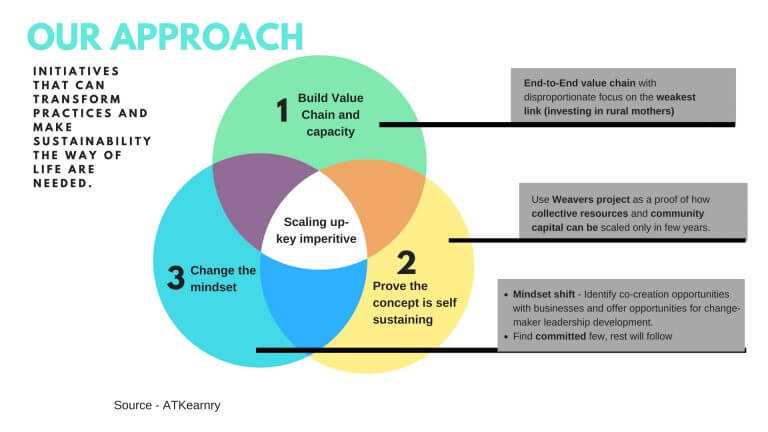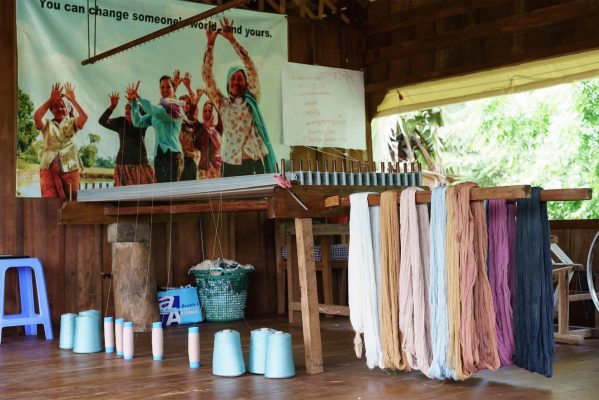What is a fashionable future –
Lately, the fashion industry has come under the spotlight, mostly for the wrong reasons. We believe that this information is not always fair and transparent. A few years ago, we started to test the possibilities of using fashion as a vehicle for positive change in the lives of the people in our village in Cambodia. And the results have been so amazing and our village projects have started to inspire other similar initiatives and it is the beginning of the emergence of a brand new segment in the fashion industry. We think the future is bright and it is fashionable.
First, let’s try to break it down the key elements that have contributed to the issue, then we will outline the step by step solution that we have tested for the last five years.
The Problem/opportunity –
Modern economic models bring prosperity to emerging market countries but lead to growing inequalities in the distribution of wealth. When a garment is made in the developing world, the average percentage of the final retail cost that goes to the garment worker ranges from 0.5 – 4 percent.
In Cambodia :
- 70% of the population is deprived of economic opportunities.
- 46% Lack of fair employment and wages.
- 50% Lack of access to basic services.
- Human rights violations – 75% children drop out at grade 9 and forced to work in the factories or other abusive environments.
Why 90% of the efforts to solve these problems often fail?
- They lack the potential and resources for high impact and sustainability.
- They fail to install local capacities to support communities at risk of social and economic exclusion over the long term80% of development efforts are in the cities where 20 % of Cambodians live.
The root causes –
- Shortage of opportunities in the rural areas
- Know-how as most of the intellectuals was killed during the Khmer Rouge
- Access to the market – hence subjected to exploration by the middlemen.
The Solution/opportunity

First, is there really a solution ? The answer is YES, and here is why –
According to Inc. Eco-apparel is a $5billion market in the US alone, and has grown 300% in a decade. Google trends show that searches for “sustainable fashion” are rising faster and more steadily than searches for “organic food”. Here’s why sustainability is so important to fashion’s future.
Only 4 out of 10 businesses are looking beyond conventional approaches to sustainability in supply chains — that have shown limited results. 7 of 10 businesses are risking their short-term profits and medium-term survival by not focusing on management of natural resources.
The fashion market is expected to grow by 12% in India, 10% in China and 8% in Russia from 2010-2025 and average 4% CAGR in the rest of the world.
Impact Economy 2013: The collapse of Rana Plaza served to thrust the challenges associated with apparel production back to the top of media headlines around the world. 64.7% of companies in their online survey reported that their operations were impacted by recent negative media coverage.
Deloitte 2013: Continuing Business as usual (BAU), there is a need for 2.3 Earths by 2050. Sustainability is a strategic business imperative because of 7 key drivers: rising population, pollution, climate change, increasing energy scarcity, land scarcity, water scarcity, and rising wages/worker unrest.
The global women’s apparel market will grow by 50% over the next 12 years and emerging markets will account for 55% of apparel sales and 60% growth by 2025.- Mckinsey 2013
if we could provide opportunities to the mothers through many many micro enterprises right in the village to generate good income, create a tribe of people who could mentor each other and connect them directly to the end user, this can create a ripple effect of sustainable, scalable and positive impact.
How will Cambodia look like once it is solved? we have already reached the tipping point, now we have many people who want to help themselves using this model. If we sustain this trajectory, we will be able to have the entire poor population this village ( 250 families ) will be able to progress out of poverty.
Mission statement – Enable every village parent, who is willing, to be able to realize their passion and be able to convert it into profit through entrepreneurship, that they can invest in the future of their family and become the role model of positive change for others.
Change Theory –
Apply the law of diffusion of innovation. Create a tribe who belong to each level of the value chain of the fashion industry.


